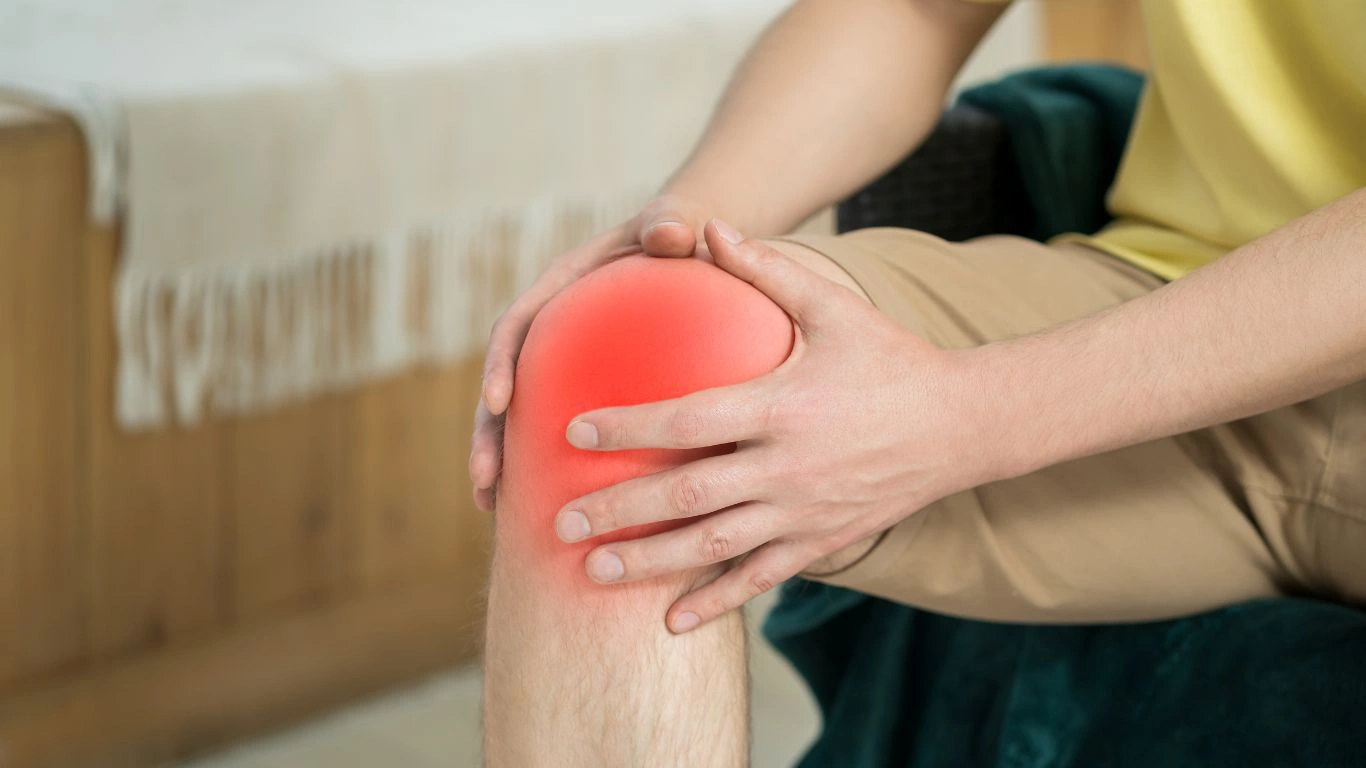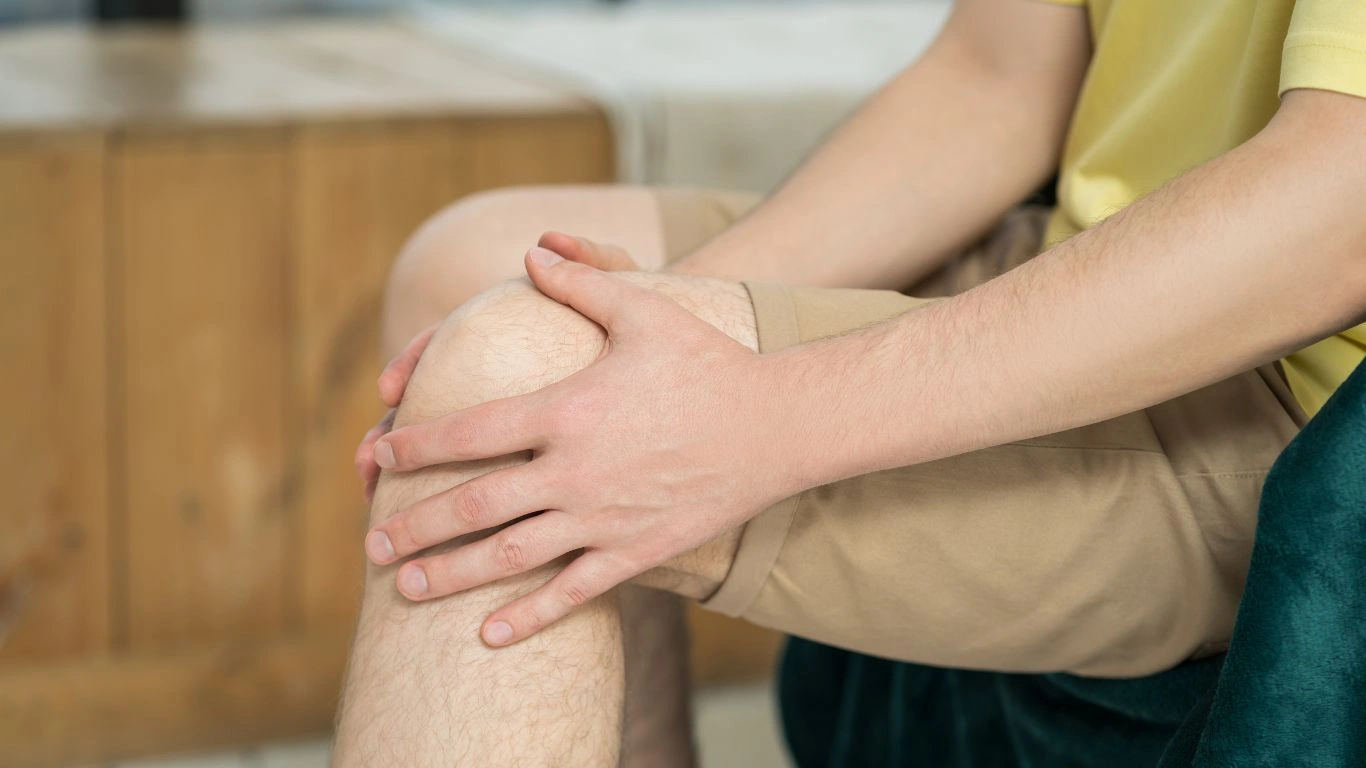How Weather Changes Affect Rheumatoid Arthritis Symptoms: Tips for Relief
As someone who’s worked as a Rheumatology Nurse Practitioner for years, I’ve seen firsthand how tricky it can be to manage rheumatoid arthritis (RA). And let’s face it—there are so many unpredictable factors that can make it even more challenging. One of the most common questions I get from my patients is about weather and its impact on their symptoms. It’s almost like the weather is an unwelcome guest at the RA party—always making things more complicated than they need to be. Whether it’s cold, heat, or even a sudden change in humidity, it seems that our joints can feel the shift before we do. If you’re living with rheumatoid arthritis, you know what I mean. So let’s take a deep dive into how weather changes can truly affect RA and why those of us with this condition seem to be more sensitive to changes in the environment.
Why Does Weather Affect RA Symptoms?
When you have rheumatoid arthritis, you’re already dealing with chronic pain and inflammation that can fluctuate. Add in the weather, and it’s like throwing gasoline on a fire. But why does this happen? Well, let me break it down for you. RA is an autoimmune disorder where your body’s immune system mistakenly attacks the synovial membrane—the tissue lining your joints. This leads to inflammation, pain, and swelling. However, when the weather changes, especially during extreme temperature shifts, the immune system’s response can go haywire, making symptoms worse.

In particular, cold weather seems to be the top culprit. When temperatures drop, your body tends to tighten up to conserve heat, which can reduce flexibility and make joint pain feel worse. This is especially true for people who already have stiff joints from RA. On the flip side, heat can also trigger flare-ups. Believe it or not, extreme heat can cause inflammation in joints to worsen, leading to swelling and discomfort. It’s all about balance—and for people with RA, finding that sweet spot can feel impossible at times.
The Role of Humidity in RA Pain
It’s not just temperature changes that can throw a wrench in things. Humidity also plays a major role. High humidity can make the air feel thicker, and this can affect the way our body reacts to inflammation. The barometric pressure (which is the weight of the air around us) also changes with humidity levels, and this can put additional pressure on your joints. So, you might notice that when it’s both hot and humid, your joints might feel like they’re working overtime. On the other hand, when the air is dry and the pressure is lower, some people experience relief. But, for many, the impact of humidity is one of those variables that can make a huge difference, depending on where you live.

Cold Weather and Its Impact on RA
Let’s start with the one we all dread: cold weather. As the temperatures drop, many people with RA report a significant increase in joint stiffness and discomfort. This is particularly common in the winter months when the cold weather often causes muscles to contract and joints to stiffen. For some, the cold is a trigger that leads to more severe pain, making it harder to move around or even get out of bed some days. As much as we love cozying up in blankets, for those of us with RA, the cold weather isn’t as much of a warm welcome as we’d like to think.
- Stiffness: In colder weather, the body naturally tries to preserve heat, which can lead to increased muscle and joint stiffness.
- Increased Sensitivity: Some studies suggest that cold temperatures can amplify the pain signals sent to the brain, making your joints feel more sensitive.
- Reduced Mobility: Cold temperatures can limit your range of motion, making it harder to stretch or move your joints freely.
That’s why I always recommend layering up and keeping warm when the temperature drops. Some of my patients find that wearing heated pads or using hot packs on particularly painful areas can really help. I’ve also seen a few patients swear by a warm soak in the tub to loosen things up. A little heat can go a long way in fighting off that cold-induced stiffness!

Why Does Cold Weather Trigger RA Symptoms?
So why does cold weather feel like a pain trigger? The main reason is that it causes blood vessels to constrict, which can limit the amount of oxygen and nutrients flowing to your muscles and joints. This makes it harder for your body to deal with the inflammation that comes with RA. And while a lot of us think of RA pain as being isolated to the joints, the reality is that inflammation can also affect the surrounding muscles, tendons, and ligaments. When it’s cold, everything just feels tighter, which only intensifies that discomfort.
In my experience, the best way to cope with cold weather is to keep your joints warm and protected. Gentle exercise, like stretching or a light walk, can also help keep blood flowing and prevent stiffness. The key here is to stay active, even if you have to go a little slower during the colder months.
Hot Weather and Its Impact on RA
Now that we’ve covered the cold, let’s talk about the other extreme: hot weather. While we often think of heat as being a relief from the cold, it can actually cause its own set of challenges for those of us living with rheumatoid arthritis. Summer can be a tricky time for RA patients. While some might feel that warmth helps with stiffness, the reality is that hot temperatures can still exacerbate joint pain, particularly if you’re already in the middle of a flare-up. I’ve had a lot of patients tell me that when the temperature rises, their pain levels seem to increase too. And let’s not forget how heat can also cause swelling in the joints, making them feel even more stiff and uncomfortable.

Why Does Hot Weather Worsen RA Symptoms?
Here’s why hot weather can be a problem for some people with RA. When the temperature rises, blood vessels tend to dilate to help cool down the body. This can increase the blood flow to your joints, and while that sounds good in theory, it can actually make inflammation worse. The added pressure on the joints combined with the heat can lead to more swelling and pain. It’s the classic case of too much of a good thing—your body is trying to cool itself down, but this process can exacerbate the pain from RA.
From my experience, patients who live in areas with extreme heat often need to make adjustments to their daily routine. I always tell my patients to avoid the hottest parts of the day (usually between 11 a.m. and 3 p.m.) and to stay cool as much as possible. Hydration is key here. When it’s hot outside, your body sweats more, which can lead to dehydration, a condition that can worsen joint pain. So, don’t forget to drink plenty of water!
The Importance of Barometric Pressure on RA Pain
Another factor that plays a big role in how weather impacts rheumatoid arthritis symptoms is barometric pressure. This is a topic that often gets overlooked, but it’s super important. Barometric pressure refers to the weight of the air around us, and it fluctuates with changes in the weather. When a storm is approaching, the air pressure tends to drop, and this change can lead to more pain and stiffness for RA patients.

I’ve heard countless stories from patients who can feel a storm coming before the weather even changes. It’s like their joints are a built-in weather forecast! The drop in barometric pressure can cause joints to expand slightly, which can lead to increased pain and discomfort. For some, even small shifts in pressure can make their symptoms flare up. It’s almost like the body is reacting to the pressure in the same way it would react to an injury—by inflaming and swelling. If you’re someone who deals with this, you’re not alone. Many RA patients have reported the same thing.
How to Cope with Barometric Pressure Changes
While we can’t control the weather, there are a few things you can do to help manage the impact of barometric pressure changes on your RA. The first step is simply being aware of your body’s signals. If you’re someone who tends to feel increased pain with weather shifts, keep an eye on the forecast. Knowing that a storm is coming might give you a heads-up to prepare. For example, when pressure drops, some people find relief in warming up their joints or doing light stretches. It’s a good idea to incorporate these small changes into your routine as soon as you feel that familiar pressure starting to build.
- Keep your joints warm: Heat can often counteract the effects of low pressure. Try using heating pads or warm baths to soothe stiffness.
- Stay active: Gentle movement can help keep blood flowing and prevent joints from stiffening, which is especially important as the pressure shifts.
- Manage your stress: Stress can worsen RA symptoms, so practicing relaxation techniques like deep breathing or meditation can help you cope with the discomfort caused by pressure changes.
One thing I always tell my patients is that staying proactive is key. If you know that changes in weather and pressure affect your RA, try to take action before the flare-ups occur. Prevention is often more effective than treatment when it comes to RA management.
How Seasonal Changes Affect RA Flares
Seasonal changes can also have a significant impact on rheumatoid arthritis. When one season transitions to another, your body needs to adapt to the new environmental conditions. For instance, the shift from winter to spring often means changes in temperature, humidity, and barometric pressure, all of which can throw your RA out of balance. Some patients report that spring and fall are the worst seasons for their RA symptoms. It’s not just the weather, but also the allergies that come with these changes. In fact, seasonal allergies can make RA symptoms worse by triggering inflammation and adding additional stress on the body. So, it’s not just the temperature swings but the whole seasonal package that we have to keep an eye on!

What You Can Do to Manage Seasonal RA Flare-Ups
So, what can you do about it? Well, staying prepared is your best bet. For many people with RA, using the seasonal transition to their advantage is about making small lifestyle tweaks. You might want to consider adjusting your activity levels or your diet based on the changing weather patterns. For example, during the winter months, you might need to increase your intake of foods that are rich in vitamin D, since your exposure to sunlight may be limited. During the warmer months, you might need to stay on top of hydration and manage your physical activity to avoid overheating.
Another key point is to keep your medications in check. Make sure you’re sticking to the treatment plan that works for you. If you notice that seasonal changes are causing more flare-ups than usual, it’s a good time to talk to your rheumatologist and see if any adjustments are needed.
Ultimately, it’s all about staying ahead of the curve and adapting to the changes that each season brings. With a little planning and preparation, you can minimize the impact that seasonal shifts have on your rheumatoid arthritis and continue to live your life as comfortably as possible.
Managing RA Symptoms During Extreme Weather Events
Extreme weather events like heatwaves, sudden cold snaps, or storms can be especially tough for those living with rheumatoid arthritis. I’ve had many patients express that these types of weather extremes tend to throw their bodies into overdrive, making managing their symptoms even more challenging. The combination of temperature fluctuations and extreme conditions can trigger a flare-up that feels almost impossible to get under control. As a healthcare professional, I’ve seen firsthand how weather-related changes can make it hard for individuals with RA to find relief, but there are steps you can take to mitigate the impact and take charge of your condition.

Tips for Coping with Weather Extremes
It’s all about preparation. When I talk to my patients, I emphasize how important it is to listen to their bodies and plan ahead, especially during extreme weather events. Here are a few strategies that can make a big difference:
- Layer up during cold spells: Keeping your body warm is crucial in the winter. Wearing layers can help you regulate your body temperature, and thermal wear can protect your joints from the cold.
- Keep your home environment stable: If you live in an area with unpredictable weather, try to keep your home temperature consistent. A space heater for chilly months or a fan for warmer months can help.
- Take it easy when the weather is extreme: Whether it’s too hot or too cold, you might need to adjust your exercise routine. On particularly extreme days, consider doing gentle stretches indoors or opting for low-impact exercises like swimming or yoga.
- Hydrate constantly: Hydration is essential, especially in the heat. Water helps keep joints lubricated, and dehydration can make symptoms worse.
Managing RA during extreme weather is about being proactive. Understanding how certain conditions trigger your symptoms will allow you to take the right steps at the right time. Don’t be afraid to make adjustments to your daily routine to better handle the weather changes that come your way.
The Role of Lifestyle Changes in Managing RA Symptoms
While weather certainly plays a significant role in how rheumatoid arthritis manifests, your lifestyle choices can have just as big of an impact. From what you eat to how much you sleep, the choices you make daily contribute to how well you manage your condition. It’s important to have a holistic approach to managing RA, one that takes into account not only the environmental factors but also your overall well-being.

Diet and RA
As a nurse practitioner, I’ve worked with many patients who have found relief by adjusting their diets. There’s no one-size-fits-all solution, but certain anti-inflammatory foods can help reduce flare-ups and ease pain. Omega-3 fatty acids, which are found in fish like salmon, are particularly known for their anti-inflammatory properties. Green leafy vegetables, nuts, and seeds also play a role in reducing inflammation in the body. At the same time, some foods—like processed sugar, refined carbs, and red meat—can exacerbate inflammation, so it’s worth experimenting with your diet to see what works best for you.
Some patients even find that eliminating gluten helps their symptoms, while others prefer to focus on the Mediterranean diet, which is rich in healthy fats and antioxidants. Keep in mind that every person is different, so it’s important to work with a healthcare provider or dietitian to tailor your diet to your specific needs. Small dietary tweaks can make a big difference in your daily comfort levels.
Exercise and RA
Exercise might feel like the last thing you want to do when your joints are stiff and painful, but staying active is key for managing RA. That doesn’t mean running a marathon—far from it. In fact, gentle movement is all you really need. Low-impact exercises, such as walking, swimming, and cycling, are great for keeping your joints moving without putting too much strain on them. Exercise also helps with muscle strength, which can support the joints and provide relief during flare-ups.
From my experience, the key to staying active with RA is consistency. Even if you can only do a few minutes a day, it’s better than nothing. Aim for gentle stretching or some yoga each morning to help your joints feel more mobile throughout the day. If you’re unsure about where to start, I recommend speaking with a physical therapist who can guide you through exercises that are safe for your condition.
Working with Your Doctor to Manage RA Symptoms
As with any chronic condition, working closely with your doctor is vital for managing rheumatoid arthritis. Medication plays an essential role in controlling inflammation, but it’s also important to have regular check-ups to monitor how your RA is progressing and how weather changes might be affecting you.
If you find that your symptoms are significantly worsened by the weather, your rheumatologist might adjust your medication regimen or recommend additional treatments. Biologic drugs, for example, are commonly used to target specific areas of the immune system that contribute to RA symptoms. And corticosteroids may be prescribed during particularly challenging flare-ups to reduce inflammation quickly. But no matter the weather, staying in touch with your healthcare team will ensure that you have the support you need to manage your condition effectively.
Managing Stress for Better RA Control
One often-overlooked factor in managing RA is stress. Stress can cause inflammation in the body, which only exacerbates RA symptoms. It’s important to find ways to manage stress, whether through mindfulness, deep breathing exercises, meditation, or even just taking time each day to relax and do something you enjoy. In my practice, I’ve seen how stress management can significantly reduce flare-ups, allowing patients to feel more in control of their condition.
Sometimes, it’s the little things that make the biggest difference. By taking time to de-stress, whether it’s through a favorite hobby, a warm bath, or spending time with loved ones, you can help keep your body in a more balanced state.
Disclaimer: This article provides general information about rheumatoid arthritis and its connection with weather changes. Always consult with your healthcare provider before making any changes to your diet, exercise routine, or medication. Your healthcare provider can offer personalized advice based on your individual needs and condition.
For more information on managing rheumatoid arthritis and its symptoms, visit reliable health websites such as Health.com and National Institutes of Health (NIH).

Tarra Nugroho is a dedicated Nurse Practitioner with a strong foundation in family and preventive care. She brings both compassion and clinical expertise to her practice, focusing on patient-centered care and health education. As a contributor to Healthusias.com, Tarra translates medical knowledge into clear, empowering articles on topics like women’s health, chronic disease management, and lifestyle medicine. Her mission is simple: help people feel seen, heard, and informed—both in the clinic and through the content she creates. When she’s not caring for patients, Tarra enjoys weekend hikes, plant-based cooking, and curling up with a good health podcast.






